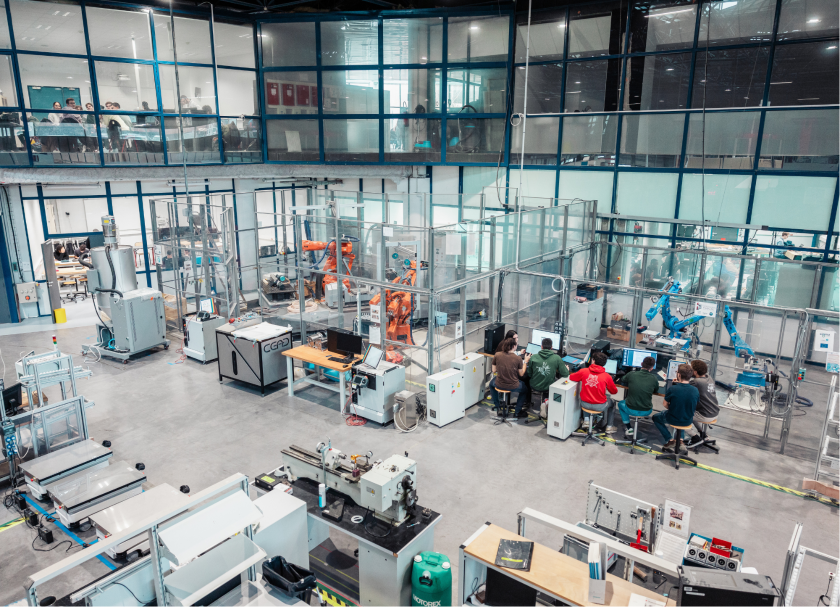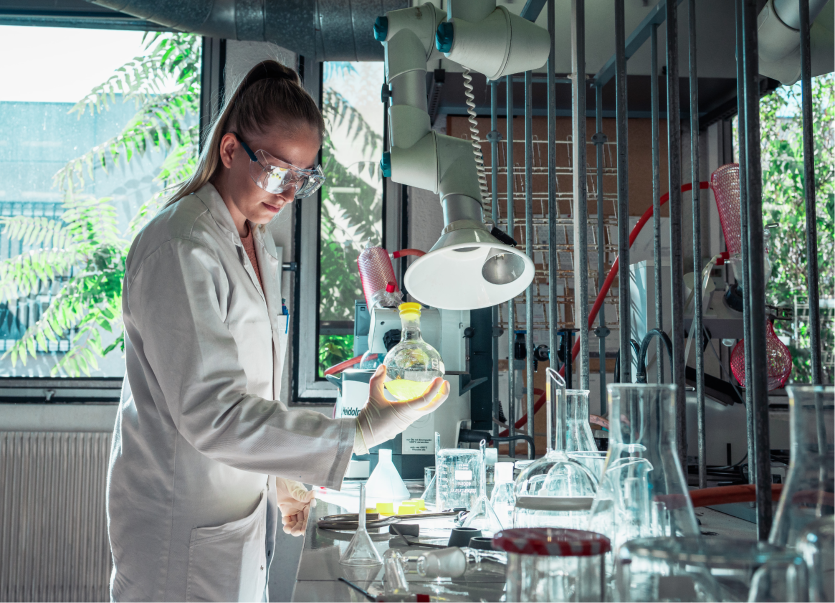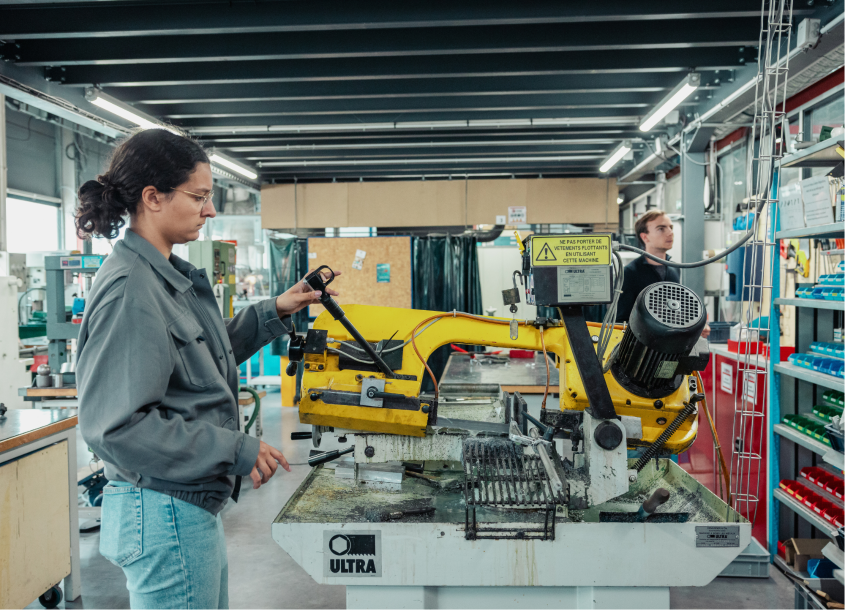SIGMA Clermont is fully equiped with state-of-the-art equipment for courses and projects.
Our technology centres contain the same kind of equipment as industrial companies, in order to enable our students to study in a real-world professional environment. They are used for teaching, research and technology transfer. SIGMA Clermont students perform practical work and carry out their projects using this equipment. At the same time, they interact with the researchers, engineers and technicians who are using these same resources.
The mechanical engineering centre covers 3200 m² and offers an exceptional choice of equipment for high-speed machining, robotics, vibratory analysis, tests, measurements, characterisation, design and manufacturing.

The chemistry platform offers systems for analysis and characterisation (using techniques like NMR, FTIR, XRD, X-ray fluorescence, LC-MS, GC-MS, DSC, etc.) and organic and inorganic chemical synthesis. SIGMA Clermont is the only school in France to have a predictive-control instrumented chemical reactor.

SIGMA Clermont has a FabLab, called SIGMAke, proposing resources for the numerical design and manufacture of prototypes. These resources are available to our students within the framework of their courses, or for their personal and club projects. SIGMAke users have access to a laser cutting machine, 3D printers, electronic test bench, machine tools, etc. For more information, see the FabLab website: SIGMAke

Our students have access to a wide range of calculation and simulation software (Ansys, Matlab, ACD/Spectrus Processor, CaRlne, CES selector, Gaussian, Abaqus, Adams, Arena, Catia V5 et V6, CES, Maple, TechOptimizer, Robotware...). These applications are available on around 250 computers in our laboratories for practical work and projects ; some of these machines are available 24 hours per day.
A Numerical Work Space (intranet) provides practical information concerning studies (grades transcripts, certificates, timetable, etc.) as well as teaching resources (online courses, exercises, corrected versions, etc.) accessible via a Moodle platform.
Nicolas BLANCHARD
Manager, SIGMA Technology Center / Coordinator for partnerships with Japan
Maxence BLANCHARD
